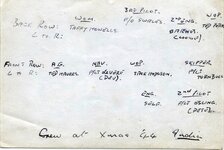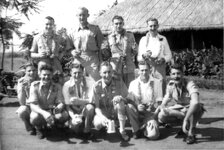Doodey
Airman
My late father was a flight sergeant WOM/AG with 240 squadron's special duties flight based at Redhills Lake, Madras India as part of the RAF's SEAC. I am wanting to build a model of one of the Catalinas he flew in at that time: W8405 which his log says was a MK1A, and he described as "a stripped down Cat with VLR tanks."
I am seeking details of markings, colour scheme etc, for my model. I have purchased a Revell MK2 kit which I plant to start building in the next month or so. Can anyone suggest sources, information I can use? I have squadron ORBs but, for this purpose, they are no help.
I am seeking details of markings, colour scheme etc, for my model. I have purchased a Revell MK2 kit which I plant to start building in the next month or so. Can anyone suggest sources, information I can use? I have squadron ORBs but, for this purpose, they are no help.


